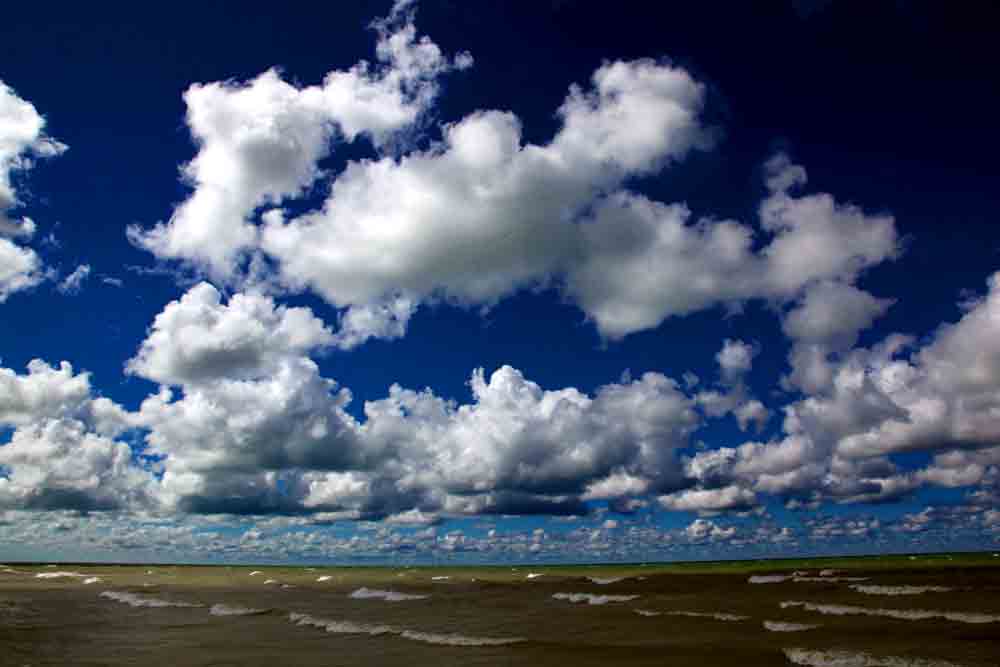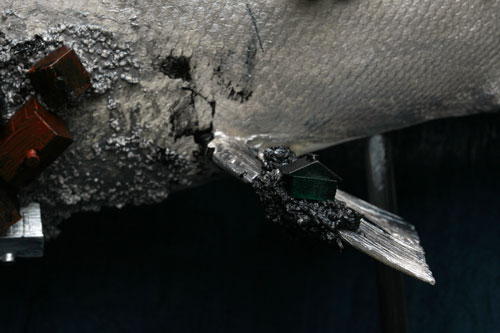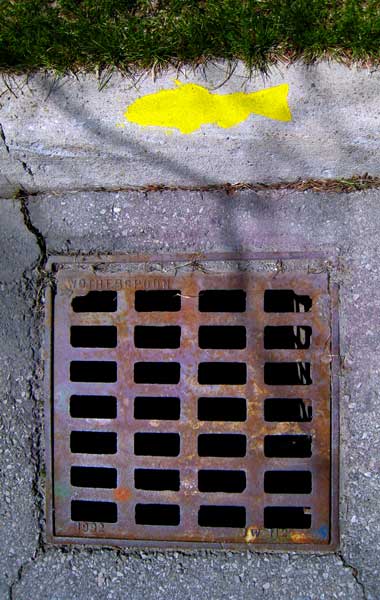Dark Water 1 is an oil painting portrait of a beautiful polar bear swimming. The water is dark, as daylight is diminished in the arctic fall.
Polar Bear in Dark Water. ©Christine MontagueAvailable at Artworld Fine Art Gallery until July 20, 2017. 365 Evans Ave. Toronto, Ontario, Canada.
But dark water has another implication. The earth’s bright white polar ice cap, which serves as a giant reflector for the sun’s heat, is being diminished by climate change from carbon emissions. The melting polar ice increases the darkness of the planet’s surface (hence “dark water”), decreases the sun reflected back into space, and increases the heat absorbed by the earth. More ice melts, which creates more dark water, and so the loop continues.
This loop of sea ice loss and increased dark water endangers the polar bear. Although this magnificent bear is a highly intelligent (think great ape), top-of-the-arctic-food-chain marine mammal (the only bear that is such), and is a powerful swimmer (slightly webbed front paws, highly insulated and buoyant body), it is dependant on the frozen sea for hunting (only seal fat sustains them, not berries or birds’ eggs), resting, feeding (can’t nurse in water) and denning (necessary for mother bears with cubs, semi-hibernation, and to ride out storms). The increase of the period of open water from spring to fall, and the distance between ice tops in winter, leaves the polar bear and its cubs vulnerable to starvation, attack, and drowning.
The polar bear in Dark Water 1 gazes back upon her path, her body twisted as if in question.
It is up to the viewer to imagine how far outside the picture frame the next ice floe waits, and whether or not, until this moment, her journey was a solitary one.









